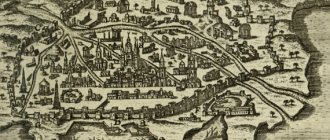Aramaic)
| 11:25 LORD’S PRAYER “OUR FATHER” (in Aramaic) |
| This is for printing Avvon d-bish-maiya, nith-qaddash shim-mukh. Tih-teh mal-chootukh. Nih-weh çiw-yanukh: ei-chana d'bish-maiya: ap b'ar-ah. Haw lan lakh-ma d'soonqa-nan yoo-mana. O′shwooq lan kho-bein: ei-chana d′ap kh′nan shwiq-qan l′khaya-ween. Oo′la te-ellan l′niss-yoona: il-la paç-çan min beesha. Mid-til de-di-lukh hai mal-choota oo khai-la oo tush-bookh-ta l′alam al-mein. Aa-meen. Abvun d-bashmayo, netkaddash shmah. Tete makultah. Neyway zebiyanoh: aykana d-bashmayo: af bara. Hab lan lama d-sunkanan yomano. Uashbok lan hav bein: uatayin aikana dofnan sh-bokan lahayobain. Uela talan lenesyona: ela patsan min bisha. Metul delyahi malkuta uahhaila uatish buta laalam olmin. Amen. https://www.youtube.com/watch?v=CglbMwRYal4&feature=related LITERAL TRANSLATION: O Breathing Life! Your name shines everywhere! Make room to plant Your presence, imagine in Your imagination Your “I can” now, clothe Your desire in all Light and Form. Grow through us bread and insight for every moment. Untie the knots of failure that bind us, just as we release the ropes with which we hold the misdeeds of others. Help us not to forget the Source, but free us from the immaturity of not being in the Present. From You arises every Vision, Power and Song. From meeting to meeting. Amen. Let our next actions grow from here. https://www.youtube.com/watch?v=AfJ5RwAvmoY&feature=related IN CHURCH SLAVIC: Our Father, who art in heaven! Hallowed be Thy name, Thy kingdom come, Thy will be done as it is in heaven and on earth! Give us this day our daily bread. And forgive us our debts, just as we forgive our debtors, and do not lead us into temptation, but deliver us from the evil one! For Yours is the kingdom, and the power and the glory forever! Amen. |
| Category: ONLY ABOUT LOVE | | Added by: Emmy | Rating: 5.0/1 |
| Total comments: 1 |
| Order of comments: Default First new ones First old ones Spam 1 Emmy (01/08/2014 01:37 pm) Oh, Lord, give me strength, To walk with my feet on the ground, To breathe freely and easily, And to distinguish between good and evil. Do not believe pretentious words, Know the value of torment and sins, Know how to forgive, know how to love, Know how to appreciate moments. To be wise in action, Strong in sorrow, To only have good goals. Oh, Lord, give me strength, Not to be, but to mean on Earth! |
Only registered users can add comments.[ Registration | Entrance ]
Source: https://putluybvi.ucoz.ru/news/molitva_gospodnja_otche_nash_na_aramejskom_jazyke/2013-11-14-496
Translation of prayer from Aramaic into Russian
The text differs significantly from the Orthodox version familiar to everyone. The prayer in Aramaic was translated verbatim, resulting in a sublime, inspiring, sincere text. A more obvious and sensual call to glorify the Lord is perceived. There is also hope for the help and love of the Almighty. There is also a mention of a request to help forgive the sins of other people.
By and large, this version has the same meaning
the same as the Orthodox version, but clothed in a different form.
Moreover, the translation of the prayer from Aramaic is more understandable to ordinary people who have not studied the Bible too deeply. For comparison, the controversial points of the Orthodox version:
- "Our Father who art in heaven." In this case, a persistent association of division immediately arises: the Lord is exalted, and people are down to earth. This is an erroneous opinion, since the main goal of turning to the Almighty is to increase love for God, people, and everything that exists that the Lord unites. This implies a person’s separation from everything worldly and elevation to the Lord. It is necessary to strive for this, at least for a short time - while the prayer continues.
- "Hallowed be thy name." Don't take every word literally. So, there is no call to illuminate the name of the Heavenly Father. The word “sanctify” is synonymous with “glorify,” which means fulfilling the commandments, observing religious canons, and leading a righteous lifestyle. All these actions and actions contribute to the glorification of the Lord.
- "Thy will be done." Hidden in this phrase is the need to gain faith in the Almighty. Under this condition, complete trust arises and hope comes. As a result, the worshiper fully accepts any events occurring in his life and around him, since this is a consequence of the will of the Lord.
- “Give us our daily bread” - this is partly how the request is expressed to provide the worshiper with everything necessary for survival in the world, but the word “bread” also means the need for spiritual food.
- “And forgive us our sins, as we forgive our debtors.” In this phrase, the meaning is relatively clear: the person praying asks the Lord for forgiveness, but does not forget about other people who also need absolution. Thus, a person approaches the Kingdom of Heaven, because he thinks not only about himself, but also about others. They are all brothers and sisters. This means that renunciation of one’s own “I” when reading a prayer allows one to move from the category of sinners to the group of righteous people.
- “And lead us not into temptation, but deliver us from evil.” There is another contradiction hidden here: the Almighty does not tempt people, but he helps to overcome temptation. This allows you to endure any trials, gaining piety. Without the help of God, it is difficult to overcome certain obstacles every time; the Almighty gives strength and love. In addition, the “evil one” is mentioned. This is the devil, he received this name due to the derivative word form (bow, crafty, that is, crooked, not straight and astray). When the devil is mentioned by this word, it means that he contributes to the distortion of the paths of the righteous, the loss of conscience.
About the Christian prayer “Our Father...” or what language did the Lord Jesus Christ speak?
The New Testament does not answer this question. Therefore, the question of the languages that Jesus Christ spoke has occupied scientists for many centuries. In the 18th century Jesus was believed to know Greek.
The following arguments were given as justification: Greek was the most common language in Palestine at that time; Jesus spoke to Pilate without an interpreter
, which means their conversation took place in Greek. In the 19th century Another view prevailed: Jesus' primary language was Hebrew.
At the same time, scientists did not distinguish between literary Hebrew, in which the Old Testament was written, and colloquial Hebrew from the time of Christ.
Emmanuel Tov a professor at the University of Jerusalem , who heads the project to publish the Qumran Dead Sea Manuscripts, believes that in Judea, during the earthly life of Jesus, they most likely prayed in Hebrew in synagogues, and outside Palestine they prayed in Greek: they forgot their native language, according to According to the scientist, the Jews prayed in Hebrew, and then interpreted Scripture in Aramaic. The professor draws such conclusions based on the fact that at Qumran most of the manuscripts are written in Hebrew, a few in Greek and very few in Aramaic, mainly targums (interpretations of the Holy Scriptures) and literary works.
In the middle of the 20th century, Qumran finds began to appear.
Most of these manuscripts were composed in Hebrew, and only a small part in Aramaic, so scholars began to reconsider this position, recognizing the wider use of Hebrew.
Among these finds were not only literary monuments, but also letters addressed to Bar Kokhba or belonging to Bar Kokhba. This is, after all, 135 A.D.
Currently, biblical scholars believe that, if not throughout Palestine, then at least in Judea, in Jerusalem, Hebrew continued to exist as a spoken language until the 2nd century after the birth of Jesus Christ. Hebrew was the language of the Bible, which set certain literary norms, but at the same time there was spoken Hebrew.
Apparently, at the end of the Second Temple era they diverged quite a lot. In Hebrew there is a “high” and “low” style: there is a written language, a literary language, and there is a spoken language. The same situation exists now in Arab countries, where they write in the language of the Koran and speak in different dialects, says Archpriest Leonid Grilikhes.
He develops this idea further.
“When Jesus Christ discusses some theological issues with the Pharisees and Sadducees, it is most likely Mishnaite Hebrew, that is, colloquial Hebrew, the language of the Jewish academy and school.
During a public sermon (for example, the Sermon on the Mount), most likely He should have focused on a high style - the literary language of the sermon could be closer to the language of the Old Testament.
When the Lord talks with a Syrophoenician or Samaritan woman, He obviously speaks Aramaic; with the disciples, probably also in Aramaic. But this is external evidence.
Or you can attract internal evidence, that is, turn to the Gospel texts themselves, and try to reconstruct them to see in which language the reconstruction looks more convincing, i.e. in which language does this or that parable fit better?
As for the Semitic words that found their way into the Greek texts, there are both Aramaic and Hebrew ones. The Gospel cites the words of Christ on the cross, for example, in the Gospel of Mark: “Eloi, Eloi” is a transcription from Aramaic, the same saying is in Matthew - “Eli, Eli” is from Hebrew.
The version “Lama” is from Hebrew, “Lema” is from Aramaic. “Savakhtani” is clearly from Aramaic, because it is a transliteration of the Aramaic word “shvakhtani”. But in Beza’s code there is a variant of “azavtani” - a tracing paper from Hebrew.
Worship in the Jerusalem Temple was, of course, conducted in Hebrew. The Pentateuch was read in the synagogues. It was read in a year or three years, and readings from the prophets were added to the Torah. Everything was read in Hebrew, but it is clear that quite early, in the era of the second temple, the practice of translating the readings into Aramaic developed.
Listen online: audio track of prayer in authentic Aramaic
To correctly read words in an unfamiliar language, as well as to place stress in them, it is recommended to listen to an audio recording. This provides a free opportunity to understand and imagine what the Aramaic dialect sounds like. In addition, the audio file is often saved for oneself, so that later one can listen to the Lord’s Prayer in Aramaic as soon as the need arises.
Beware of fake: “literal” translation of the Lord’s Prayer from Aramaic
While traveling through the Internet, I came across one interesting note: “A literal translation of the Lord’s Prayer in Aramaic.” I was interested in the name itself and, having opened the link, began to look for this prayer. To my surprise, I found something that I was not looking for, something that, in my opinion, went beyond the truth.
The translation of the Lord's Prayer from Aramaic into Russian was as follows:
“O Breathing Life, Your Name shines everywhere! Make space to plant Your presence! Imagine in your imagination your “I can” now! Clothe Your desire in every light and form! Grow through us bread and Insight for every moment! Untie the knots of failure that bind us, Just as we release the ropes with which we hold the misdeeds of others! Help us not to forget our Source. But free us from the immaturity of not being in the Present! From You arises every Vision, Power and Song From meeting to meeting! Amen. Let our next actions grow from here.”
I could not believe my eyes, my spirit resisted accepting, reading such, I will not hesitate in expressions, nonsense that the author presented as a literal translation of a prayer from Aramaic into Russian. I looked at various links on the Internet and was amazed at how many links said the same thing. People ignorantly copy the text and share it with others, passing it off as some kind of secret truth. Reading this “translation”, for some reason, I immediately remembered the Gnostics (a heretical sect of the 1st-2nd centuries AD), who propagated a certain secret teaching of Christ, giving enlightenment to man and an understanding of all things, and pantheism (heresy of the 4th century AD, exists to this day).
One of the authors who posted this nonsense on the Internet claimed that Aramaic was the dominant and primary version of the written text of the New Testament. The Peshitta (the Syriac translation of the Bible, an Aramaic dialect) was based on the translation of the Aramaic Targum, which means the Greek version of the New Testament was later than the Peshitta, and was only a translation from the Aramaic language, the same one that was native to Jesus Christ and the apostles. In other words, the Greek version is not primary. Assuring readers, the author shares a false “translation from the original language” into Russian.
Before we get into the actual separation of flies and cutlets, let me remember a little from Christian history:
There are several ancient translations of the Holy Scriptures into various languages: the Septuagint - a Greek translation of the Old Testament, the Targums - a general name for translations of the Old Testament into Aramaic, the Vulgate - a translation of the Bible into Latin, and the Peshita - one of the translations of the Bible into Syriac (Edessa dialect of Aramaic language). The author's hypothesis, according to which the Peshitta was based on a translation of the Aramaic Targum, does not stand up to criticism and does not receive the support of theologians, scientists, and history. However, elements of Targum influence are observed in the text of the Syriac Old Testament (especially in the Pentateuch of Moses and Chronicles). But the style and level of translation of the Old Testament books of the Peshitta varies quite a lot in different parts of Scripture. Some parts of it may have been translated by Syriac-speaking Jews before the emergence of the Christian Church, while others may have been revised by the first baptized Jews.
Speaking about the Aramaic language, it should be noted that in the Hellenistic era and up to the Arab conquest, it successfully competed with Greek, reserving the role of local dialects for all other Semitic languages. But from the 2nd century, the ancient Aramaic language, in which the entire Middle East, including Egypt, was spoken, underwent changes and strong modifications under the influence of various cultures and subsequently the conquest of the Arabs (7th century AD).
Historically, it should be noted that the books of the Old Testament were translated into Syriac in the last quarter of the 2nd century AD. BC, the New Testament books were translated by the beginning of the 5th century AD. and were apparently grouped and revised by the Bishop of Edessa, Rabbula. That is, by the 5th century AD, the Peshita as such had already been formed (the very name “Peshitta”, in relation to the standard (generally accepted) Syriac Bible, appeared only in the 9th century AD).
But refuting the historicity, there are still people who claim that the entire teaching of Christ and the apostles was taught only in Aramaic, and it was this language, being the language of the original text, that preceded the text of Scripture in the Koine Greek dialect. It is also surprising that this position is mainly adopted by those who share the views of Nestorianism (the heresy of the 4th century, dividing Christ into a simple man before baptism and the Son of God after that, i.e., rejecting one single person and hypostasis).
Studying biblical studies, we remember that there is a synoptic problem (similarities and differences in the Gospels). And today there is no firm belief as to why it exists, there are only various hypotheses, each of which has its own pros and cons. Today, one of the most realistic hypotheses is that Matthew and Luke, when writing the gospel, used a certain source “Q”, from the German “Quelle” (source), whether this source was part of the sayings of Jesus Christ in Aramaic or not, it is not known, although some of the sayings of Jesus in the Gospels are translations from Aramaic, but be that as it may, it is believed that the text of the Gospel in its current form was compiled in Greek, like other texts of the New Testament. In addition, the Greek language of the books of the New Testament was accepted by the Church Fathers as the original language of the texts, without any discussion. There is a lot of other evidence that it was Koine (a dialect of the Greek language) that was the original text of the New Testament. I would also like to note that to this day not a single manuscript of passages of the books of the New Testament in Aramaic has been found, the text of which would date earlier than the Greek Koine New Testament.
Having remembered a little history, we understand that no “original text in Aramaic” has been found (based on my convictions, it does not exist, because God allowed Scripture to be formed in the form in which we see it, have it, and with the language found in ancient manuscripts). Now about the “Our Father” prayer and the author of this “translation”. To do this, let us again turn our attention to the “literal translation from Aramaic” presented to us:
“O Breathing Life, Your Name shines everywhere! Make space to plant Your presence! Imagine in your imagination your “I can” now! Clothe Your desire in every light and form! Grow through us bread and Insight for every moment! Untie the knots of failure that bind us, Just as we release the ropes with which we hold the misdeeds of others! Help us not to forget our Source. But free us from the immaturity of not being in the Present! From You arises every Vision, Power and Song From meeting to meeting! Amen. Let our next actions grow from here.”
To begin with, it should be noted that the prayer “Our Father” was written in ancient Greek, and this translation is only a kind of “crooked reconstruction of the meaning” with deliberate misleading of the reader. We know that there are fragments, as part of the sayings of Christ, translated from Aramaic, one of such fragments is the prayer of Christ on the cross of Calvary, but among all the fragments familiar to us, there is not a single mention of the “Lord’s Prayer” in Aramaic.
In addition, in ancient Aramaic, as well as in ancient Hebrew and ancient Greek, addressing God always came in conjunction with masculine personal pronouns, but not feminine or neuter. Is it possible to imagine that a patriarchal culture, where the leading and dominant role in the family, state and politics belonged to men, suddenly allows an appeal to God as some unknown force of the feminine gender, without personality? Of course not! Not one Jew of a monotheistic religion, brought up in a patriarchal culture, who knows the books of the Law, will never allow himself to turn to God the Creator, as the author of this “translation” of the Lord’s Prayer suggests to us.
We say and understand that Scripture is interpreted only by Scripture. Jesus, in his teaching, repeatedly drew the attention of His disciples to the Father, from Whom He descended and to Whom He is coming again. He spoke about the Father's love in deeds, parables, in the history of the people, in Scripture. He emphasized His unity with the Father, but the Person of the Father as predominant in the Trinity. He never taught that the Father can be addressed as some unknown force. The Russian word “Father (parent)”, in Aramaic as well as in Hebrew, sounds like “Aba (Abba)”, in Greek “Pater”. Addressing God the Father as “Our Father” sounds like “Avinu” in Hebrew and “Avvun” in Aramaic. But what is surprising is that not once did the author of the so-called “translation” of the Lord’s Prayer use the word Father, and yet it is the main and central word in this prayer. On the contrary, I believe that the word “father” was deliberately omitted to show the false “greatness” of a literal prayer devoid of all meaning and the power of the Spirit, passing it off as a secret truth! Based on the teachings of Christ, we see how this “translation” destroys the essence of God the Father as a Person, presenting him as some kind of force, thereby undermining the relationship within the Trinity and with people. Presented to the masses, the so-called “translation” of the Lord’s Prayer is nothing more than a heresy, a fusion of Gnosticism and pantheism, a heresy with which the Church has struggled for centuries. Currently, one can see this fusion in movements such as the “New Age” (“New Age”), which with all its might declares the syncretism of religions, the destruction of true Christianity, and the rejection of the Christian idea of a personal God the Creator, contrasting it with the idea of an impersonal deity.
Now, as for the author himself who made this “translation” and threw it into the world: The author of this “translation” is a doctor of religious studies and somatic (body-oriented) psychology Saadi Neil Douglas-Klotz (Murshid Saadi Shakur Chishti). His main interests lie in the integration of ancient meditation techniques with modern psychology and body science. He is a specialist in the field of Middle Eastern mysticism, the author of several books devoted to the study of the so-called original message contained in the primary sources of the world's religions - “Prayers of the Cosmos: a meditation on the words of Jesus spoken in Aramaic” (by the way, it is likely that this presented “translation” is an excerpt from that very book), “The Wisdom of the Deserts,” “The Hidden Gospel,” “The Sufi Book of Life.”
Murshid Saadi (Neil Douglas-Klotz) is one of the senior teachers of the Ruhaniat Sufi order (Sufi Ruhaniat International), following the so-called “Sufi path” for about 30 years. In Russia he is known as one of the founders of the Universal Peace Dance Network. Using the Sufi technique of Zikr (the practice of remembering one's true nature, using meditation and chanting) and dancing using mantras from various religious and national traditions, he proposes to “establish a person’s real contact with himself, both with his depths and with his heights ..."
God is a Just Judge, He will judge everyone who rejects Christ as Savior and personal Lord. God will judge everyone who leads a person astray from the true path, passing off lies as truth. But no one removed responsibility for our salvation from us, as Christians who follow the Lord, no matter who or what we met along the way. Satan has not stopped walking around like a roaring lion, looking for someone to devour!
Studying the “literal translation of the Lord’s Prayer” offered for everyone to see, I also noticed that it is distributed mainly not on Christian resources, but on various heretical ones that have their affiliation with the “New Age” or share views with it - sites on mysticism , esotericism, meditation, parapsychology, talking about some secret teachings and truth. Some distribute these texts by copying them on the pages of their websites and blogs, others through statements in social network statuses. The surprising thing is that Christians, reading these texts, without delving into the very essence of what they are reading, themselves continue to spread this nonsense on the Internet, passing it off as truth, and others, echoing them, send it further. The spreading infection settles not only on the Internet, but also in the minds of many people. Some Christians, reading the text, manage to leave flattering comments on it like: “Cool,” “Amen.” It’s true,” “Thank you for the literal translation, now I’ll know.” What do you know? Why shout Amen? What's cool? They read and shout without knowing the Scriptures or the power of God! It’s a shame to eat everything without understanding what they feed you! (sorry for the directness of expression).
Now, knowing a little about the history of translations of Scripture and the author of this “translation” of the Lord’s Prayer, I think it is not difficult to understand that the so-called “literal translation of the Lord’s Prayer” distributed on the Internet has nothing in common with the real prayer of Christ, but is only a heresy, deliberately aimed at undermining Christian doctrine and destroying Christianity as a whole!
Due to the fact that the ancient Aramaic language is considered dead (Aramaic (the new Aramaic dialect) is spoken only in Syria), a rough translation of the Lord's Prayer in it would look like this:
“Avvun dbishmaya! nitkaddah shimmukh; aunt of the little boy; neve sovyanukh eichana dbishmaya ab para; Ha la lahma dsunkanan yumana; Vushuh lan khobein, eichana dap akhnan shuklan hayavin; vula taalan lnisyuna, ella pasan min bisha. Mudtul dilukh hai malchuta, uheyla, utishbukhta l'alam allmin. Amine". (Our Father who art in heaven! Hallowed be Thy name; Thy kingdom come; Thy will be done on earth as it is in heaven; give us our daily bread this day; and forgive us our debts, as we forgive debtors ours; and lead us not into temptation, but deliver us from evil. For Thine is the kingdom and the power and the glory forever. Amen.)
To summarize what has been said, I would like to encourage everyone to comprehend everything we read. Dear friends, there are a lot of things being spread on the Internet, both good and bad, watch what you read and spread. Do not distribute the so-called “literal translation of the Lord’s Prayer” online, or in any other way, do not pass it off as a lost truth, it has neither the depth nor the power of the Spirit! After all, there will be those who are weak, who do not understand, who read everything and swallow everything they read, who cannot separate the wheat from the chaff, those who will be tempted, who will believe, and as a result may fall away, because... will allow doubts to settle in his heart. And the Lord will ask us for this.
Christ left everything we need in the Scriptures, transmitted through the patriarchs, prophets, and apostles! Do not mislead the weak sheep, do not think that there is some hidden meaning where there is none. When analyzing sermons, references, texts, people's statements, check them with Scripture, is it exactly as it is presented? Remember at least the fragments of the New Testament: “Those here were more thoughtful than those in Thessalonica: they received the word with all diligence, daily examining the Scriptures to see if this was exactly so” (Acts 17:11), “Pay attention to yourself and to the teaching; do this constantly: for by doing this you will save both yourself and those who listen to you” (1 Timothy 4:16).
Knowing the truth, let us hold fast to the Scripture, neither turning to the right nor to the left!
Sergey Rostovtsev
— See more at: https://baznica.info/article/ostorozhno-falshivka-bukvalnyj-perevod-otche-nash-/#sthash.HX6Cb5Vh.dpuf
Save the Lord's Prayer in Aramaic to your phone or computer
To save the file, you need to right-click and select the desired menu item. Often you need to specify the download path. Automatic settings facilitate the process of saving video and audio. The file can be downloaded online for free. A link is provided for this. Built-in programs check for viruses, but this is not always done thoroughly; it all depends on the anti-spyware software of the PC. If you managed to download the Our Father in Aramaic, the file can be transferred to your phone. This will allow you to always carry with you a source of spiritual strength in the form of prayer.
Send this prayer to your loved ones









